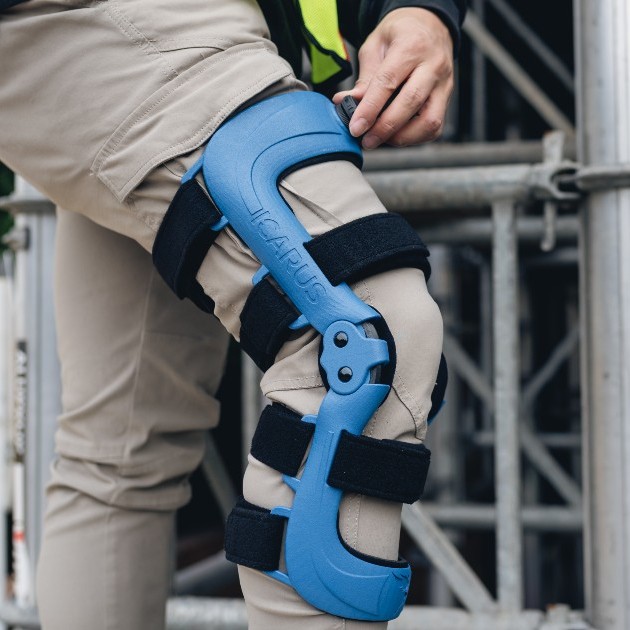The quadriceps, located on the front of the thigh, are critical muscles that are used for various daily actions such as walking, running, standing, and climbing. However, when these muscles weaken, it can lead to significant limitations in overall mobility and function. In this blog post, we’ll delve into the causes, symptoms, and effective treatment strategies of quadricep weakness to help you recover and thrive.
Understanding Quadricep Weakness
Quadricep weakness can stem from various factors, including but not limited to an injury, muscle imbalances, aging, or underlying medical conditions such as arthritis or neurological disorders. Recognizing the symptoms of quadricep weakness is essential, as they may manifest as difficulty walking, reduced stability, or discomfort in the knee area.
Diagnosis and Assessment
If you suspect quadriceps weakness, consulting your healthcare provider is crucial. They can conduct a physical examination and order diagnostic tests if necessary to assess the underlying causes and severity of weakness accurately.
Treatment Strategies
Every person is different, which is why treatment plans are a very personal journey. Below are some of the most common treatment options and how they help.
Rehabilitative Exercises
I. Strengthening Exercises
Isolating the quadriceps is essential for rebuilding muscle strength. Exercises such as leg presses, squats, and lunges engage the quadriceps effectively. Start with light resistance and gradually increase the intensity as quadriceps strength improves.
II. Range of Motion Exercises
Maintaining and improving flexibility in the knee joint is crucial for restoring mobility. Gentle stretches like knee flexion and extension exercises help enhance overall range of motion and prevent stiffness.
III. Flexibility Exercises
In addition to targeted quadriceps stretches, incorporating stretches for the surrounding muscles like the hamstrings and calves can help alleviate overall lower limb tightness and improve overall flexibility.
Physical Therapy
Hands-on techniques provided by a skilled therapist can help release muscle tension and promote relaxation in the quadriceps. Massage therapy aids in increasing blood flow and nutrient delivery to the muscles, facilitating faster recovery.
Furthermore, modalities such as ultrasound or electrical stimulation may be used as adjuncts to traditional therapy. Ultrasound therapy can help reduce inflammation and promote tissue healing, while electrical stimulation can facilitate muscle contraction.
Assistive Devices
Choosing the right knee brace can provide added support and stability to the knee joint during activities that stress the quadriceps, such as walking or exercising. Knee braces come in various designs, including sleeves, wraps, and hinged braces, catering to different levels of support needed.
In cases of severe weakness or instability, using crutches or canes can help offload weight from the affected leg and reduce strain on weakened quadriceps. Proper fitting and usage guidance from a healthcare professional are essential to ensure effectiveness and safety. Crutches or canes used in conjunction with a knee brace are the most effective course of action for people with serious cases of quadriceps weakness.
Lifestyle Modifications
Excess body weight puts added stress on the knee joint and can exacerbate quadriceps weakness. Maintaining a healthy weight through a balanced diet and regular exercise reduces the load on the quadriceps, promoting better joint health and function.
Ensuring one is consuming a diet rich in protein, vitamins, and minerals helps improve muscle health and recovery. Incorporate foods like lean meats, fish, fruits, vegetables, and whole grains to provide essential nutrients for optimal muscle function and weight management.
Don’t forget to modify activities that aggravate quadricep weakness or cause discomfort. Avoid high-impact exercises or activities that involve repetitive knee bending, and opt for low-impact alternatives such as swimming or cycling to minimize strain on the quadriceps.
Medications and Medical Intervention
Over-the-counter pain relievers like acetaminophen or nonsteroidal anti-inflammatory drugs (NSAIDs) can help alleviate pain associated with quadricep weakness. However, this is a temporary solution and prolonged use should be monitored by a healthcare professional.
In cases of severe inflammation or pain, corticosteroid injections administered by a healthcare provider can provide targeted relief. These injections help reduce inflammation in the knee joint and alleviate pain associated with quadricep weakness.
As a last resort in rare cases where traditional treatments fail to alleviate symptoms, surgical interventions may be necessary. Procedures such as knee arthroscopy or quadriceps tendon repair aim to address underlying issues contributing to quadriceps weakness and restore optimal function.
Prevention and Maintenance
To prevent recurrence and maintain quadricep strength, incorporate regular strength training exercises into your fitness routine. Focus on exercises that target the quadriceps, as well as overall lower body strength and stability. Additionally, maintain a healthy lifestyle, including proper nutrition, hydration, and regular physical activity.
Effectively Treating Quadricep Weakness
Quadricep weakness can significantly impact mobility and one’s quality of life, but with the right treatment strategies and lifestyle modifications, it is possible to regain strength and function and reverse some of the effects of weakened quadriceps. Through seeking professional guidance, staying consistent with rehabilitative exercises, and making necessary lifestyle adjustments, individuals can effectively manage quadriceps weakness and enjoy improved mobility and improved overall well-being.

